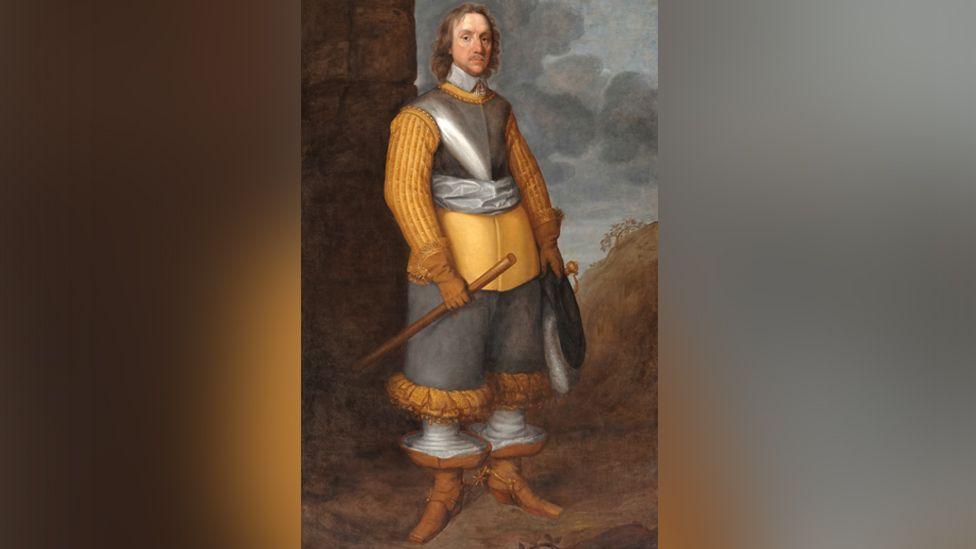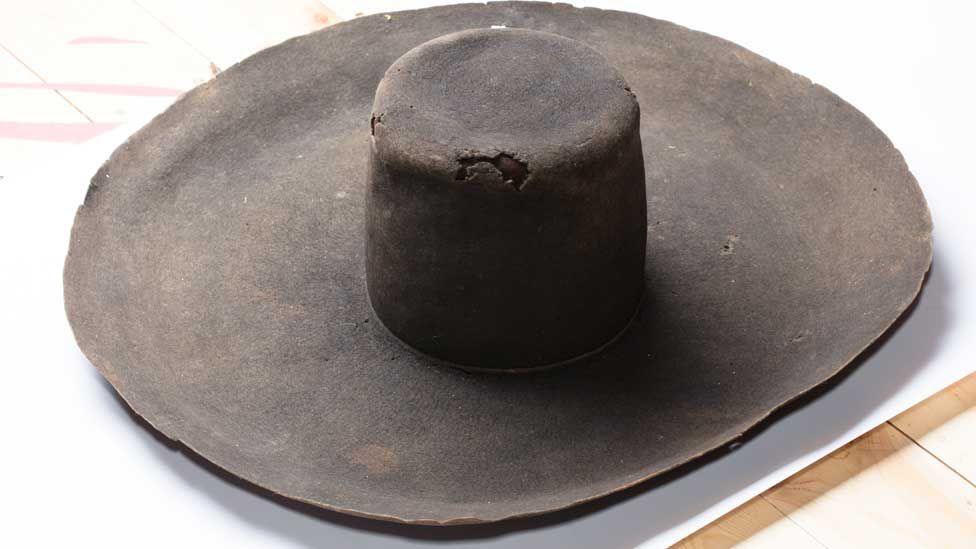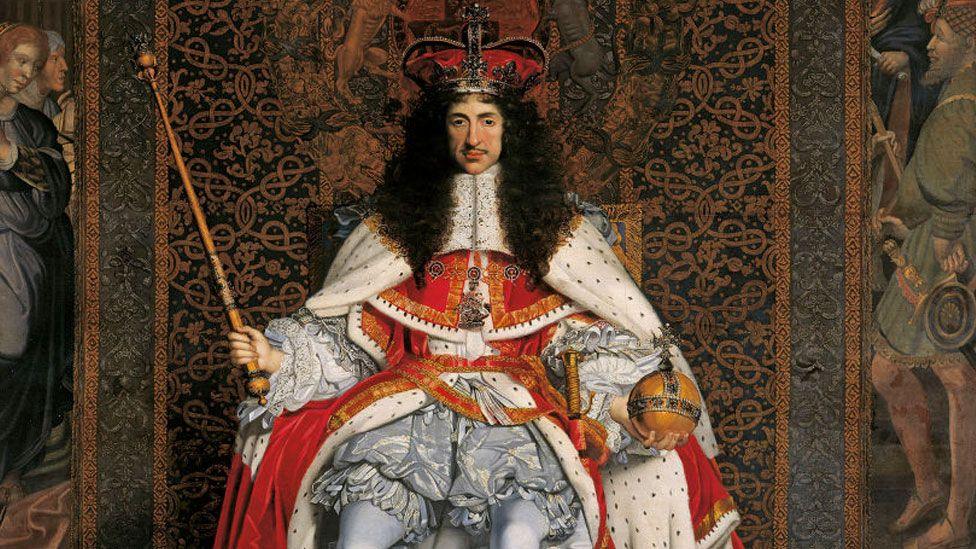Clothes display lays to rest dour Roundheads myth

Men on both sides of the British Civil Wars wore lace, while the tawny orange colour worn by Oliver Cromwell indicated he was a Parliamentarian; Royalists wore red
- Published
A new display aims to lay to rest the stereotype of dour and black-clad 17th Century Roundheads, in contrast to their silk and lace-wearing Cavalier enemies.
The exhibition is at the Cromwell Museum in Huntingdon, which tells the story of the British Civil Wars' leader Oliver Cromwell, external.
Curator Stuart Orme said for both sides, "wealth and status is about conspicuous consumption" revealed in the high-status items they wore.
Rarely seen items of clothing linked to the statesman have been loaned to the museum by some of his descendants, including a baby's gown and a pair of gloves.

An infant's gown linked to Cromwell has been authenticated as 17th Century by the Victoria and Albert Museum
'Feathers and lace'
Mr Orme said the exhibition hoped to address persistent stereotypes around what people wore in the mid-17th Century.
"Cromwell and his party are supposed to be in a black suits, looking dour, while the myth of the Cavaliers is they're all wearing floppy hats, feathers and lace, but scratch the surface and a more rich and interesting story emerges," he said.
The Civil Wars of the 1640s were between the supporters of King Charles I - the Cavaliers - and those who opposed him, including Parliamentarians like Cromwell, known as the Roundheads.
Cromwell grew up in the Cambridgeshire town that is now home to the museum in his name and was instrumental in Charles I's execution in 1649. He become Lord Protector of England, Scotland and Ireland in 1653 until his death in 1658.
Two years later, Charles I's son was restored to the throne as Charles II and would rule the country between1660 and 1685.

This broad-brimmed hat reputed to have belonged to Cromwell is a status symbol: black dye was expensive and its design required large amounts of costly material
Many of the fashions linked to Charles II's Restoration court were already in vogue at Oliver Cromwell's court, including silk dresses for women and long frock coats and curly wigs for men.
Mr Orme said: "For example, in 1657, Cromwell's daughter Frances got married and her husband was wearing a long curly wig, so Cromwell nicked it and ran away with it - yes, he was a bit tipsy.
"It very much shows his practical joke style of humour, but it also illustrates the changes in fashion were already there."

Many of the fashions associated with the return of Charles II, such as long men's coats and wigs, were already being worn at Oliver Cromwell's court, said Mr Orme
"The items on display are rare survivors from a time when all clothing were hand spun, hand-woven, hand-dyed and hand-stitched," he added.
"Clothes were expensive so they were worn to destruction - a very different way of thinking from today with its fast fashion and its chuck-it-away mentality."
Highlights include an original set of women's corsets, as well as a handmade Flemish lace collar and a pair of beautifully hand-tooled leather gloves, both reputed to have been worn by Cromwell.
They are among the items on loan to the museum, handed down the family by descendants of his daughter Bridget.
Stitching the Nation: Fashion in Times of Turmoil runs until 12 April.
Get in touch
Do you have a story suggestion for Cambridgeshire?
Follow Cambridgeshire news on BBC Sounds, Facebook, external, Instagram, external and X, external.
Related topics
- Published10 May

- Published6 October 2024

- Published17 November 2024
